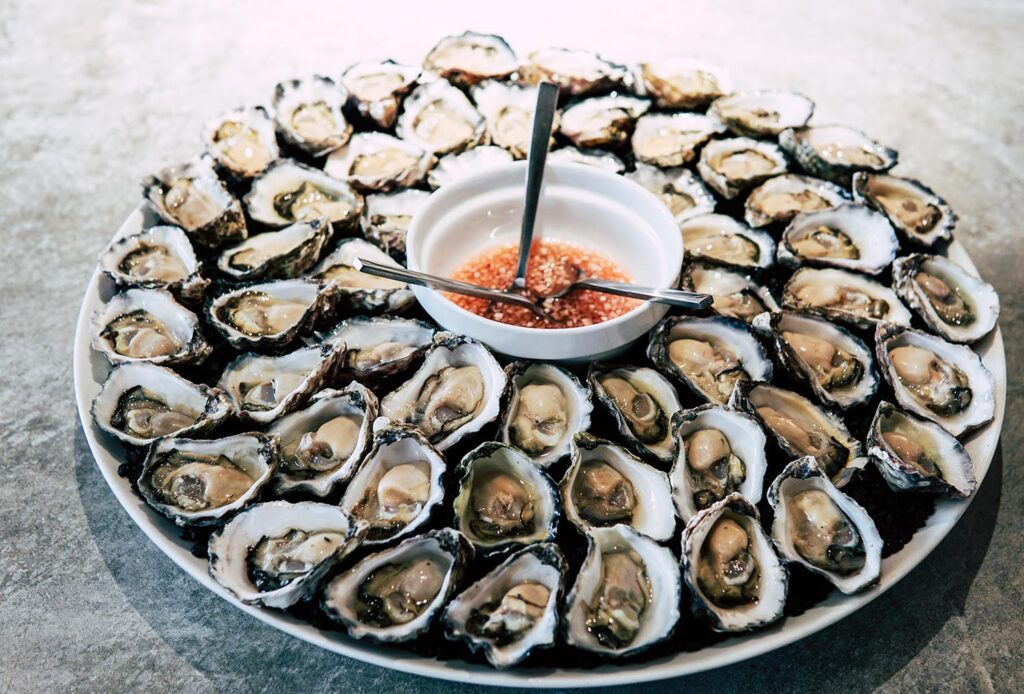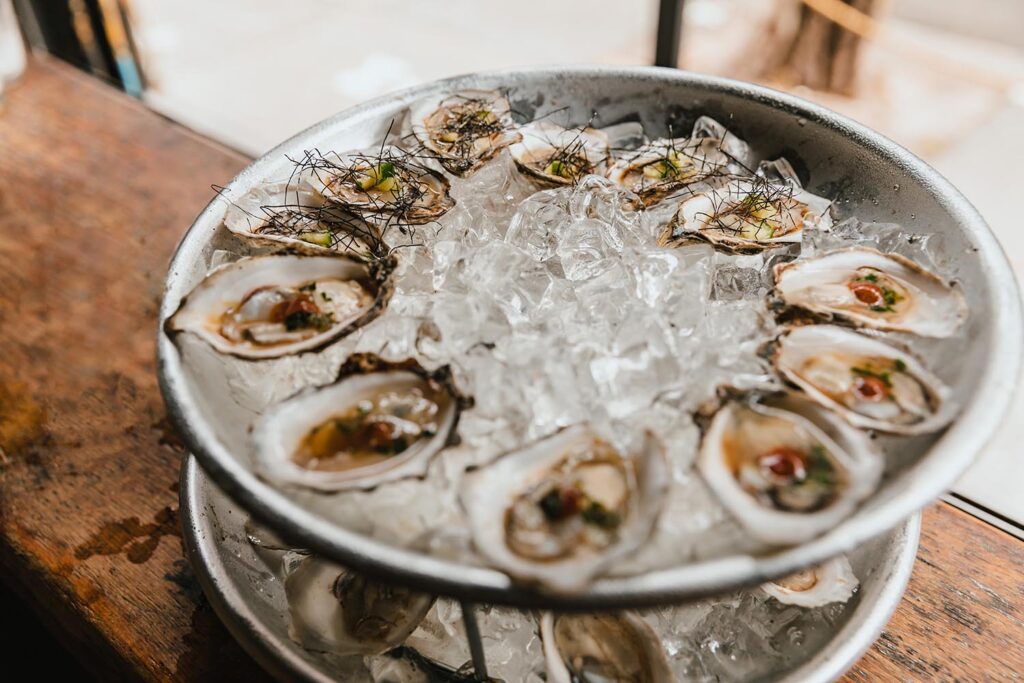Oysters Rockefeller, with its irresistible blend of succulent oysters, buttery breadcrumbs, fresh herbs, and rich Parmesan, stands out as one of the most iconic seafood dishes ever conceived. Named after John D. Rockefeller, one of the wealthiest Americans ever, this dish is decadent. This article delves deep into the history, preparation, and allure of Oysters Rockefeller.

A Brief History
The origins of Oysters Rockefeller are firmly rooted in the culinary haven of New Orleans. The dish was created in 1889 by Jules Alciatore of Antoine’s Restaurant, the oldest family-run restaurant in the United States. Legend has it that the chefs at Antoine’s needed an alternative for their popular snail dishes due to a shortage of European snails. Oysters, being plentiful in the Gulf, seemed the perfect substitute.
Though the dish was created out of necessity, it was a stroke of genius. The richness of the buttery topping contrasted beautifully with the salty freshness of the Gulf oysters. So rich was the dish that it was deemed fitting to be named after John D. Rockefeller, the wealthiest American at the time.
Key Ingredients
The success of Oysters Rockefeller lies in its harmonious combination of ingredients. Here’s a closer look:
- Oysters: The base of the dish, fresh oysters are a must. They provide a natural brininess that balances the richness of the topping.
- Breadcrumbs: Fresh breadcrumbs give the dish its signature crunch. When combined with butter, they form a golden crust that is both flavorful and texturally satisfying.
- Herbs: Traditionally, parsley and chives have been the herbs of choice. However, many chefs also include tarragon or basil. These herbs lend a refreshing note to the dish, cutting through its richness.
- Parmesan Cheese: The sharp, umami flavor of Parmesan adds depth to the dish. It melts and combines with the breadcrumbs when broiled, creating a crispy, cheesy crust.
- Butter: This is what makes Oysters Rockefeller truly indulgent. Butter helps bind the topping and, when melted, infuses the oysters with its rich flavor.

Crafting the Perfect Oyster Rockefeller
Preparing Oysters Rockefeller involves several steps:
- Shucking the Oysters: This is the most challenging step for beginners. Using an oyster knife, carefully pry open the shells and detach the meat, keeping the deeper half of the shell for baking.
- Preparing the Topping: In a bowl, combine finely chopped herbs, breadcrumbs, grated Parmesan, melted butter, and seasonings. Some chefs also add a splash of Pernod or anise-flavored liqueur for an extra layer of flavor.
- Assembly: Place a small mound of rock salt or crumpled aluminum foil on a baking tray (this helps the oysters stay upright). Nestle each oyster shell into the salt or foil. Spoon the breadcrumb mixture generously over each oyster.
- Baking: The oysters are typically broiled until the topping is golden brown and the edges of the oysters begin to curl. This takes about 4-6 minutes, but times can vary based on the oven and the size of the oysters.
- Serving: Oysters Rockefeller is best enjoyed hot from the oven. Lemon wedges and hot sauce are often provided on the side for those who like a zesty kick.
Pairing Suggestions
The richness of Oysters Rockefeller pairs wonderfully with crisp white wines. A chilled glass of Sauvignon Blanc or Chardonnay complements the dish’s saltiness and cuts through its richness. A light pilsner or a citrusy IPA can be an excellent choice for those who prefer beer.
Variations and Modern Twists
Over the years, chefs have put their spin on this classic. Some versions incorporate spinach, creating a creamed base beneath the breadcrumb topping. Others introduce bacon or pancetta for a smoky flavor. There are even Asian-inspired versions with a hint of soy, ginger, and sesame.
However, purists argue that the classic recipe, with its simple elegance, needs no improvement. They believe that the perfect Oyster Rockefeller lies in the quality and freshness of its ingredients.
In Conclusion
Oysters Rockefeller is more than just a dish; it’s a culinary experience. Its rich history and mouthwatering combination of flavors and textures ensures its place in the hall of fame of seafood dishes. Whether you’re a seafood novice or a seasoned connoisseur, this dish will captivate your palate and transport you to the heart of New Orleans, where it all began.

